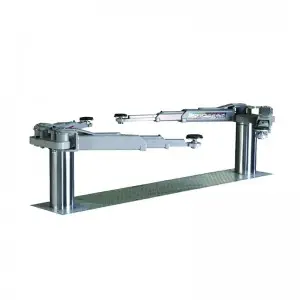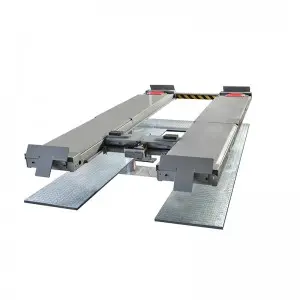****
In the realm of modern engineering, the cylinder plays a crucial role in a variety of applications that revolutionize the way industries function. This geometric shape, characterized by its circular bases and straight lateral surface, is not only an elementary figure in mathematics but also a vital component in mechanical systems, manufacturing processes, and even in architectural designs. Its significance extends beyond mere aesthetics, as the cylinder’s attributes lend themselves to efficiency, strength, and versatility across a range of fields.
**Physical Characteristics of a Cylinder**
A cylinder can be defined as a three-dimensional shape consisting of two parallel circular bases connected by a curved surface that maintains a constant distance from the center axis. The fundamental properties of a cylinder, including its radius, height, and volume, make it an object of interest in both theoretical studies and practical applications. Mathematically, the volume \( V \) of a cylinder is expressed as \( V = \pi r^2 h \), where \( r \) is the radius of the base and \( h \) is the height. Understanding these properties allows engineers and architects to design structures that maximize space while ensuring stability.
**Cylinders in Mechanical Engineering**

Understanding the Importance of the Cylinder in Modern Engineering and Its Diverse Applications Across Various Industries

Understanding the Importance of the Cylinder in Modern Engineering and Its Diverse Applications Across Various Industries
One of the most prevalent applications of cylinders is found in the realm of mechanical engineering, particularly in engines and hydraulic systems. In internal combustion engines, for example, cylinders serve as the chambers where fuel and air mix and combust, driving the pistons that ultimately power the vehicle. The efficiency and performance of an engine can be heavily influenced by the design and arrangement of its cylinders.
Furthermore, hydraulic cylinders are essential components in machines that require linear motion. These devices leverage the principles of fluid dynamics, converting hydraulic energy into mechanical force. Industries such as construction, manufacturing, and agriculture rely heavily on hydraulic systems for operations like lifting heavy loads and controlling machinery. The strength and adaptability of the cylinder shape allow these systems to withstand significant pressure while maintaining performance and durability.
**Cylinders in Manufacturing and Packaging**
Beyond mechanical applications, cylinders also play a pivotal role in manufacturing and packaging industries. For instance, in the production of goods, cylindrical molds are often used for shaping materials such as plastics, metals, and ceramics. The consistency provided by cylindrical molds ensures uniformity in products, a critical factor in quality control processes.
Moreover, the packaging industry frequently utilizes cylindrical containers for products ranging from beverages to cosmetics. Canisters and tubes are designed to optimize storage space and ease of transportation. The circular shape of cylinders is advantageous in terms of structural integrity, allowing these containers to withstand internal pressure and external handling while protecting their contents.
**Architectural and Aesthetic Applications of Cylinders**

Understanding the Importance of the Cylinder in Modern Engineering and Its Diverse Applications Across Various Industries
In architecture, the aesthetic allure of cylinders cannot be overlooked. Architectural designs frequently incorporate cylindrical elements, whether in columns, domes, or entire buildings. The use of circular forms can evoke a sense of harmony, balance, and fluidity within a space, transcending traditional rectangular designs. This not only serves a visual purpose but can also enhance the functionality of buildings by allowing for unobstructed views and efficient airflow.
Additionally, the cylinder’s geometric properties contribute to the construction of structures that can endure various forces, such as wind, earthquakes, and other environmental stressors. Architects and structural engineers carefully consider the implementation of cylindrical forms in their designs to explore innovative solutions in safety and resilience.
**Conclusion**
In conclusion, the cylinder is a multifaceted geometric shape with profound implications in modern engineering. Its fundamental characteristics and advantages render it indispensable across various sectors, from mechanical engineering and manufacturing to architecture and design. Understanding the cylinder’s properties and applications enables professionals to create efficient, durable, and aesthetically pleasing solutions that meet the demands of contemporary society. As technology and innovation continue to evolve, the cylinder will undoubtedly maintain its status as a central figure in engineering and the built environment, underscoring its timeless relevance and adaptability.New Engery Vehicle Battery Lift



